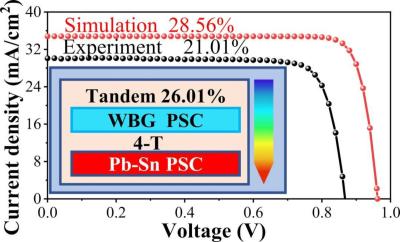Researchers from the Wuhan Institute of Technology and Wuhan University have investigated key factors for realizing high-performance narrow-bandgap Pb-Sn perovskite solar cells (PSCs) via numerical simulations.

The team studied both extrinsic and intrinsic factors of efficient narrow-bandgap Pb-Sn perovskite solar cells. The effects of extrinsic factors on device performance predicted that a p-i-n structure along with appropriate charge transport layers is superior to an n-i-p structure, benefiting from a better energy band alignment. The key intrinsic factors that were studied demonstrated that surface defect density, body defect density, and film thickness of perovskite absorbers play a pivotal role in determining device performance.
Motivated by the simulations, the scientists also successfully fabricated efficient narrow-bandgap Pb-Sn single-junction and 4-terminal all-perovskite tandem PSCs, which delivered high efficiencies of 21.01% and 26.01% measured under reverse voltage scans, respectively.
This work could help point the way toward the improvement of narrow-bandgap Pb-Sn PSCs in the future.

